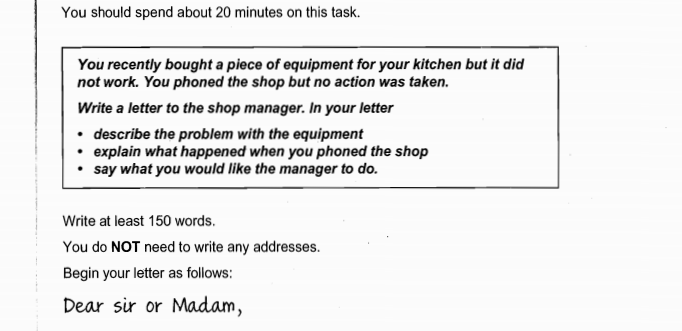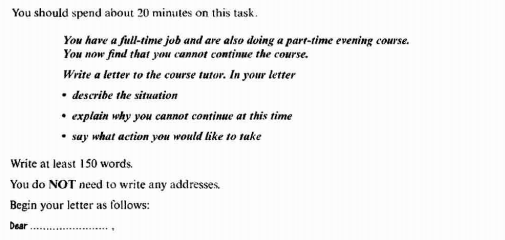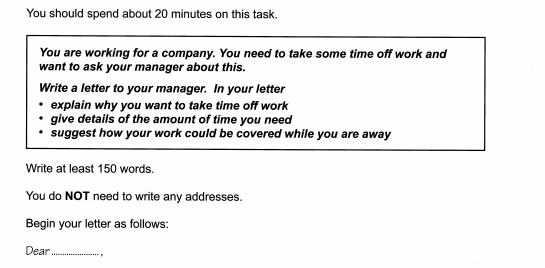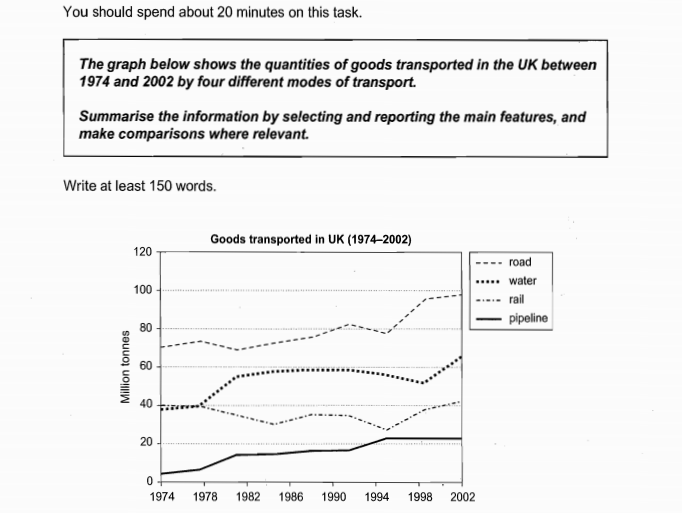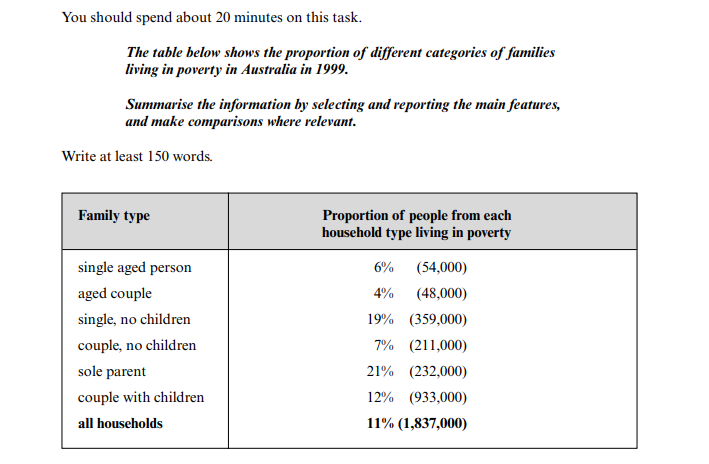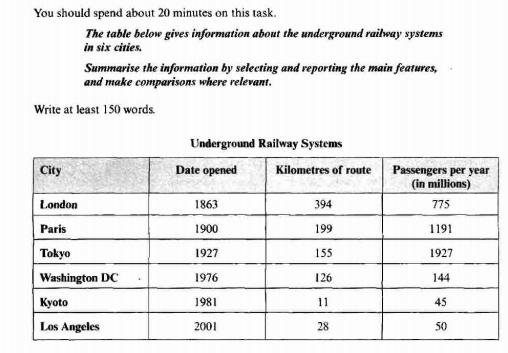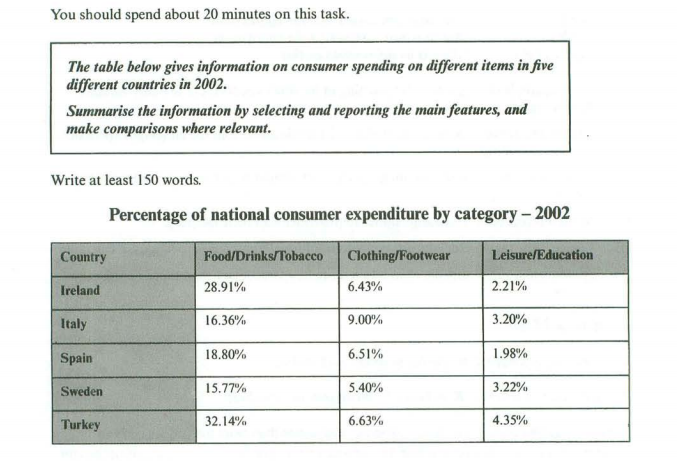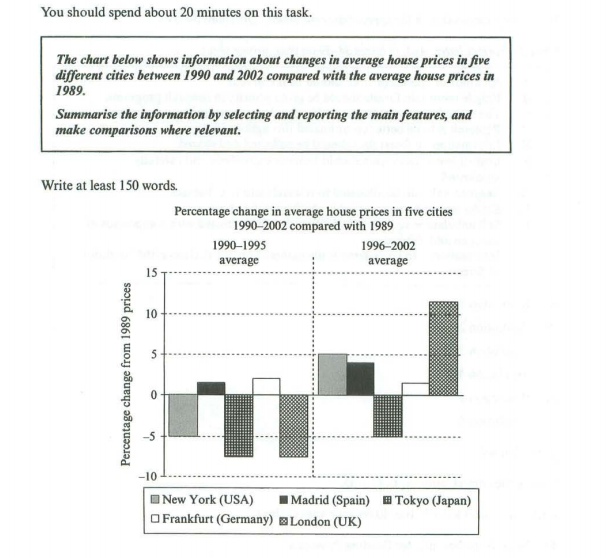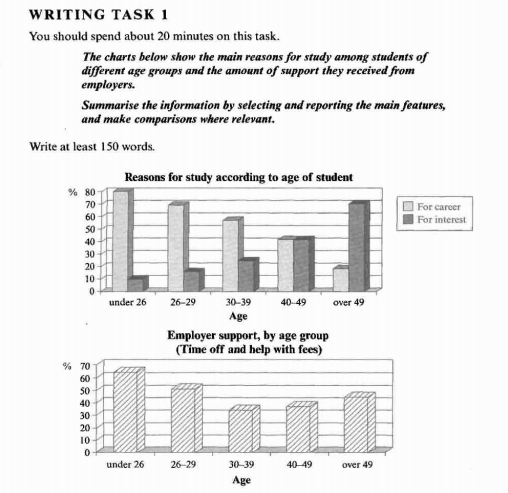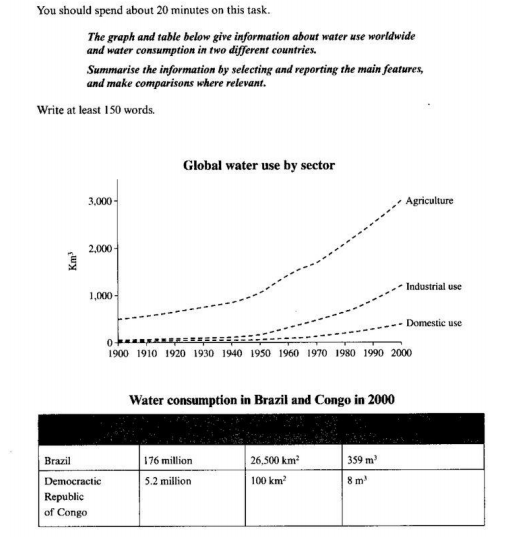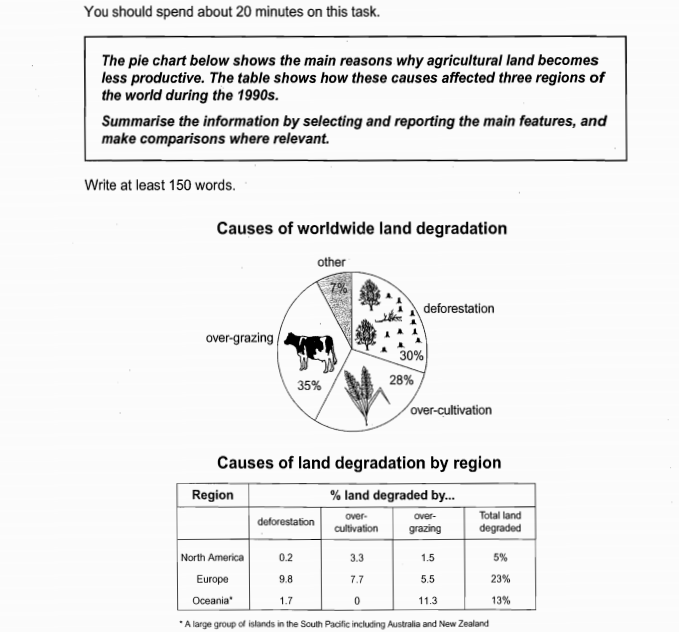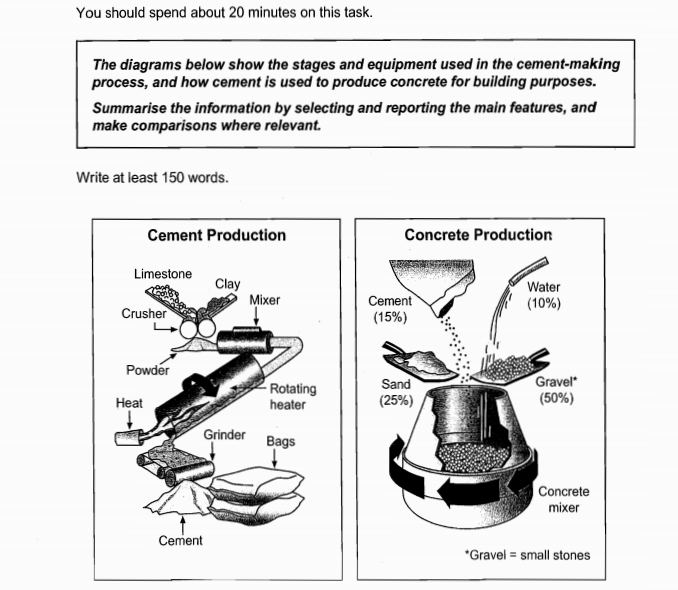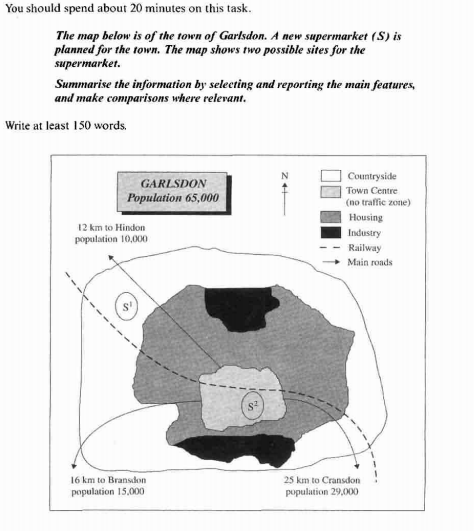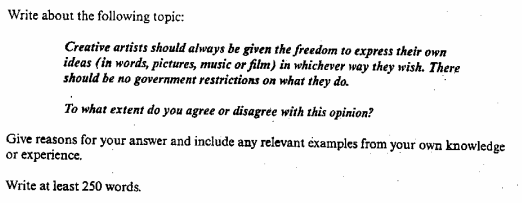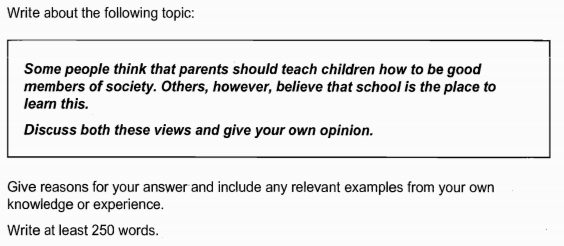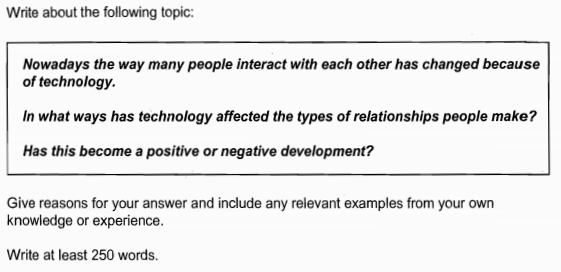The IELTS Writing Test is the third paper you will take on test day. It is split into two parts: Task 1 and Task 2. You have 60 minutes to complete both tasks.
Task 1 takes the form of an analytical report (Ac), or a letter (GT) of at least 150 words in length.
Task 2 is a discursive essay of at least 250 words in length.
Task 1 is worth a third of the total marks for writing, and Task 2 is worth two thirds, so you should try to split your time accordingly: approximately 20 minutes to complete Task 1 and 40 minutes to finish Task 2.
The Task 1 writing exercise for the General Training module is a letter. The topics are centered around everyday situations and usually require you to request or convey information, express thanks, or make a suggestion or complaint in writing.
The question will ask you to: "Write a letter to... ", and then give you three bullet points that you must cover in your letter.
Here are some example Task 1 General Training questions.
Task 1 is worth a third of the available marks for the writing section, so you should aim to spend around 20 minutes on this task.
The Task 1 Academic writing exercise is in the form of a report. You may be asked to report on a line graph, bar chart, table, pie chart, map or process diagram. Sometimes the question may combine these elements, e.g. a line graph with a pie chart or multiple graphs or tables presented together.
The question will ask you to: "Summarise the information by selecting and reporting the main features, and make comparisons where relevant."
Let's take a look at some sample Task 1 Academic questions:
Task 1 is worth a third of the available marks for the writing section, so you should aim to spend around 20 minutes on this task.

The Task 2 general and academic writing exercise is a 250 word discursive essay. The question will be in the form of a topic statement followed by a question.
You will be assessed on your ability to present and justify an opinion; present a solution to a problem; compare and contrast evidence and opinions; and evaluate and challenge ideas, evidence and arguments.
The task will give you a direct instruction relating to the topic and then ask you to: "Give reasons for your answer and include any relevant examples from your own knowledge or experience."
Let's take a look at some sample Task 2 questions:
The IELTS writing examination lasts for 60 minutes. The test paper is split into two parts:
The tasks are not equally weighted in terms of marks, so you're advised to spend around 20 minutes on Task 1 and 40 minutes on Task 2.
TASK 1
Here is the (public version) of the OFFICIAL IELTS WRITING TEST ASSESSMENT RUBRIC for Task 1:
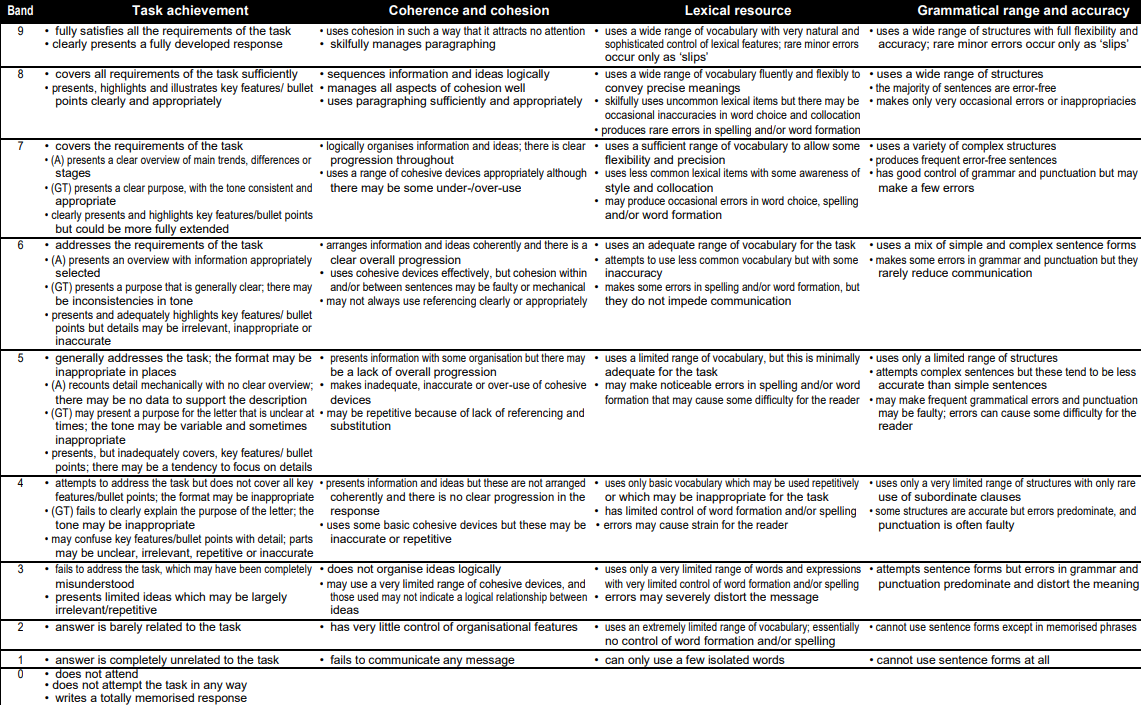
You can see that the Task 1 writing rubric is also split into four columns, each focusing on a different component of written communication:
- TASK ACHIEVEMENT (TA)*
- COHERENCE & COHESION (CC)
- LEXICAL RESOURCE (LR)
- GRAMMATICAL RANGE & ACCURACY (GRA)
(*The Task 1 and Task 2 rubrics differ only in regard to the first assessment component: Task Achievement (TA) in Task 1 and Task Response (TR) in Task 2.)
Under the headings in each column you will see a list of bullet-pointed descriptors which describe the writing features which must be demonstrated by the candidate in order to achieve the corresponding band score rating.
The IELTS writing test assessor has all of these criteria in mind and, as he/she reads through your written response, is looking for examples of each in order to accurately assess and grade the level of your writing ability.
To be awarded a particular band level rating you must be able to demonstrate all of the descriptors specified at the corresponding band level.
Task Achievement in Writing Task 1 measures how well you fulfill the requirements of the question.
For the Academic test your job is to, 'Summarise the information by selecting and reporting the main features, and make comparisons where relevant'.
For the General Training test your job is to, 'Write a letter to ________, and describe/explain/say ________'.
Take a look at how these three descriptors change from Band 5 (B5) up to Band 7 (B7):
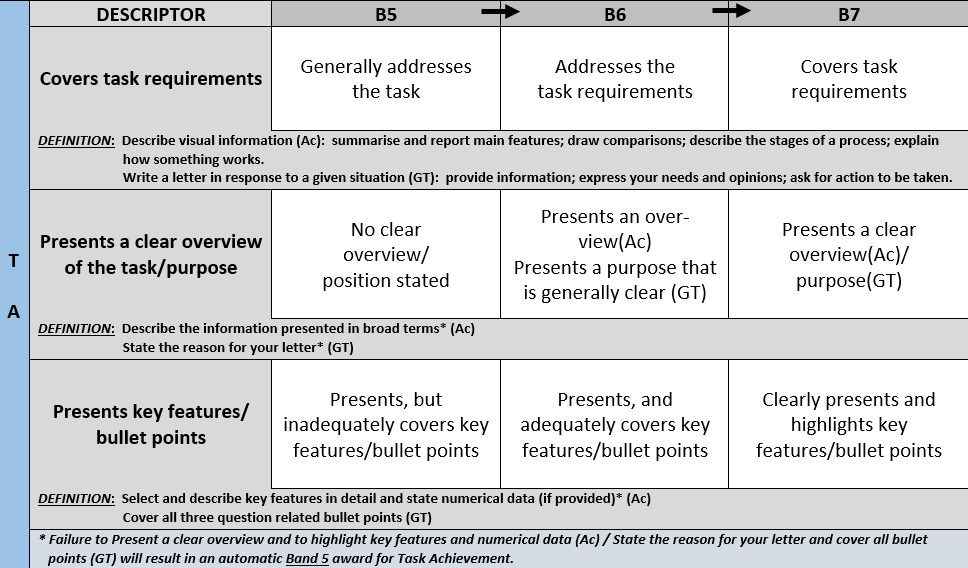
These 3 descriptors make up the basis of the TA assessment criteria.
Coherence and cohesion is a measure of how well your report or letter is structured in terms of organisation of ideas, clarity of information given, and ease of understanding for the reader.
Take a look at how these three descriptors change from Band 5 (B5) up to Band 7 (B7):
.png)
These 3 descriptors make up the basis of the CC assessment criteria.
Lexical resource is concerned with vocabulary. For a higher level score you need to use a wide range of vocabulary, choose your words appropriately, and try to make use of less-common words and phrases.
Take a look at how these five descriptors change from Band 5 (B5) up to Band 7 (B7):

These 5 descriptors make up the basis of the LR assessment criteria.
The fourth criteria the examiner is assessing when he/she marks your Task 1 response is Grammatical Range and Accuracy. To achieve an upper level band score for GRA you need to use a wide range of different grammatical structures and try to minimise the number of grammar and punctuation errors in your writing.
Take a look at how these 2 descriptors change from Band 5 (B5) up to Band 7 (B7):

These 2 descriptors make up the basis of the GRA assessment criteria.
TASK 2
Now let's take a look at the public version of the OFFICIAL IELTS ASSESSMENT WRITING TEST RUBRIC for Task 2:
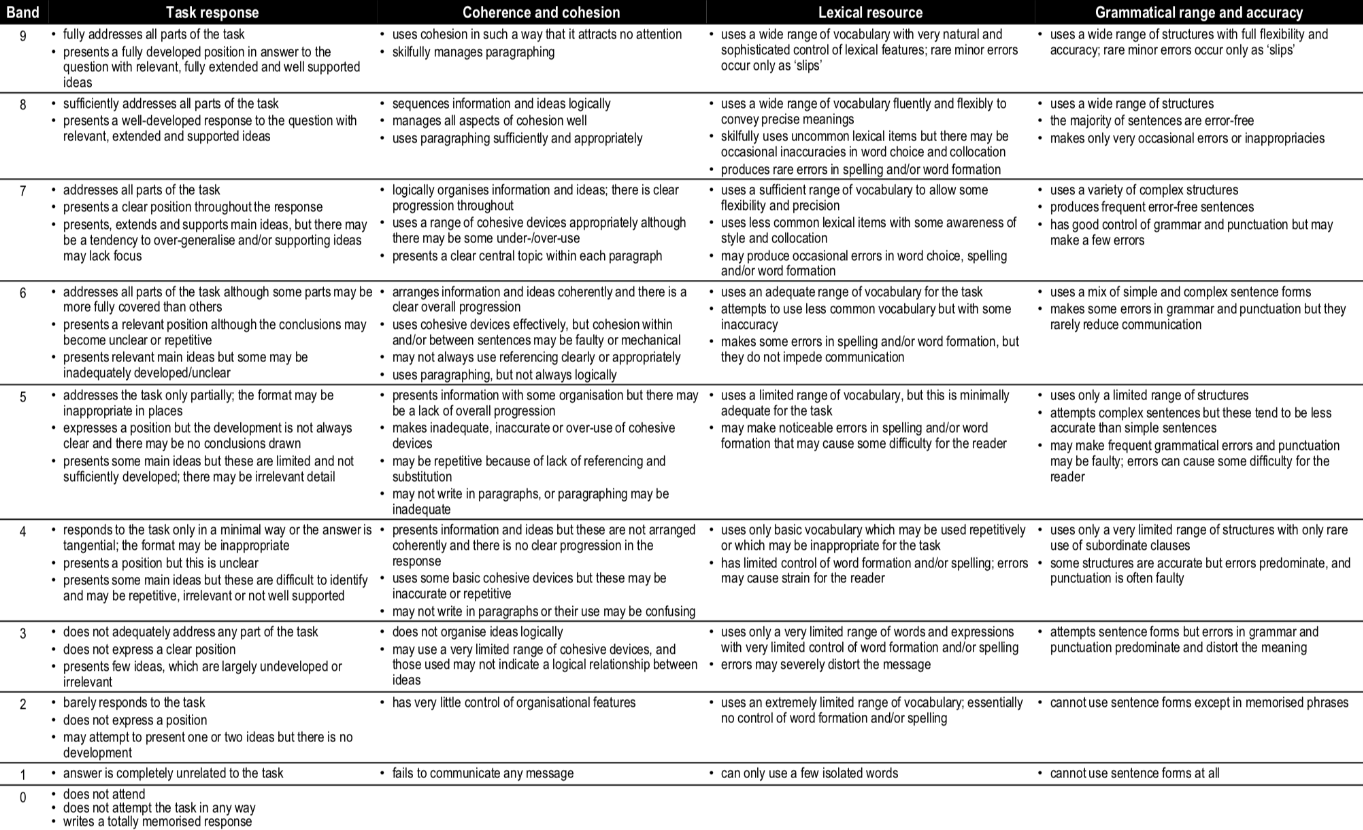
You can see that the Task 2 writing rubric is similarly split into four columns:
Task Response in Writing Task 2 measures how well you address the requirements of the essay question.
Take a look at how these three descriptors change from Band 5 (B5) up to Band 7 (B7):
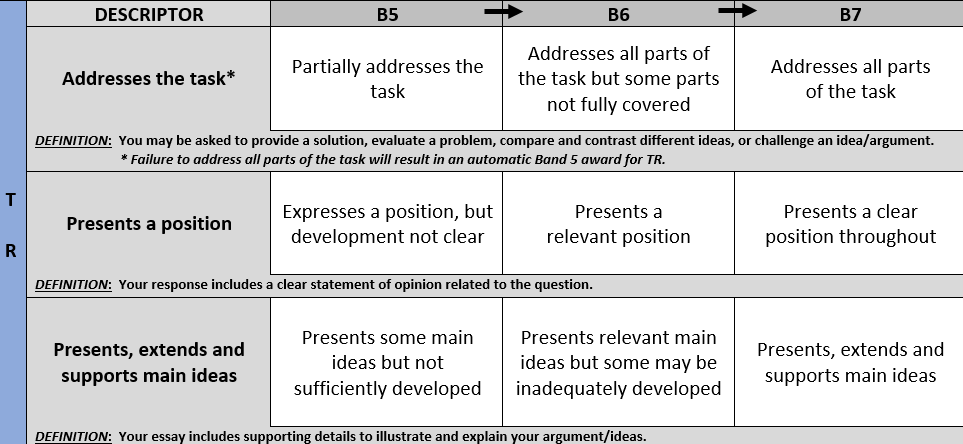
These 3 descriptors make up the basis of the TR assessment criteria.
Coherence and cohesion is a measure of how well your essay is structured in terms of organisation of ideas, clarity of information given, and ease of understanding for the reader.
Take a look at how these four descriptors change from Band 5 (B5) up to Band 7 (B7):
.png)
These 4 descriptors make up the basis of the Task 2 CC assessment criteria.
Lexical resource is concerned with vocabulary. For a higher level score you need to use a wide range of vocabulary, choose your words appropriately and try to make use of less common words and phrases.
Take a look at how these five descriptors change from Band 5 (B5) up to Band 7 (B7):

These 5 descriptors make up the basis of the LR assessment criteria.
The fourth criteria the examiner is assessing when he/she marks your Task 2 essay is Grammatical Range and Accuracy. To achieve an upper level band score for GRA you need to use a wide range of different grammatical structures and try to minimise the number of grammar and punctuation errors in your writing.
Take a look at how these 2 descriptors change from Band 5 (B5) up to Band 7 (B7):

These 2 descriptors make up the basis of the GRA assessment criteria.
Materials
The writing test is made up of 2 parts:
- a 150 word descriptive report, followed by a 250 word discursive essay (Academic)
OR
- a 150 word letter, followed by a 250 word discursive essay (General Training)
Allow yourself 60 minutes to complete the writing test.
Task 1 (Ac)
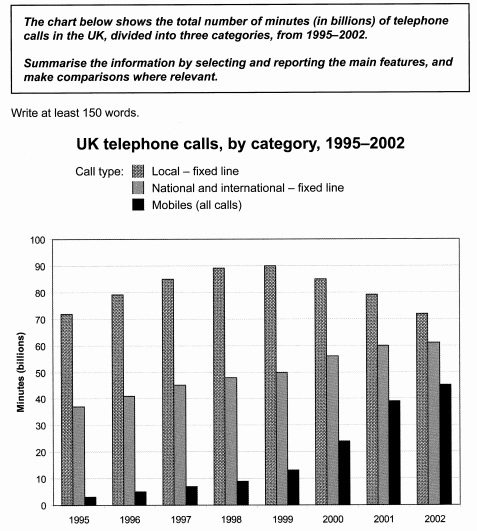
Task 1 is worth a third of the available marks for the writing section, so you should aim to spend around 20 minutes on this task.
Click here to see a model answer to this question.
Task 2 (Ac)

Task 2 is worth two-thirds of the available marks for the writing section, so you should aim to spend around 40 minutes on this task.
Click here to see a model answer to this question.
Task 1 (GT)
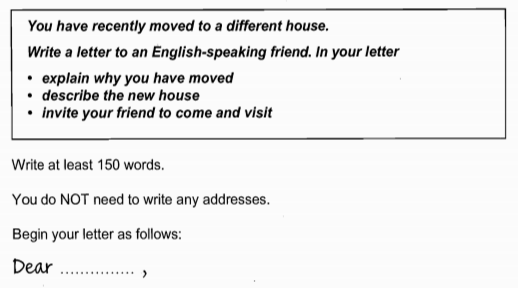
Task 1 is worth a third of the available marks for the writing section, so you should aim to spend around 20 minutes on this task.
Click here to see a model answer to this question.
Task 2 (GT)
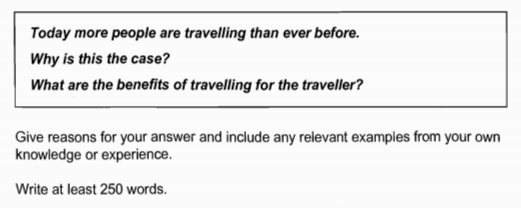
Task 2 is worth two-thirds of the available marks for the writing section, so you should aim to spend around 40 minutes on this task.
Click here to see a model answer to this question.
The writing task is often the part of the IELTS test in which candidates score lowest. The key to achieving the band score you need is to clearly understand the requirements of the task, be familiar with the IELTS writing assessment critieria and to develop a clear, well-practiced IELTS essay writing technique.


